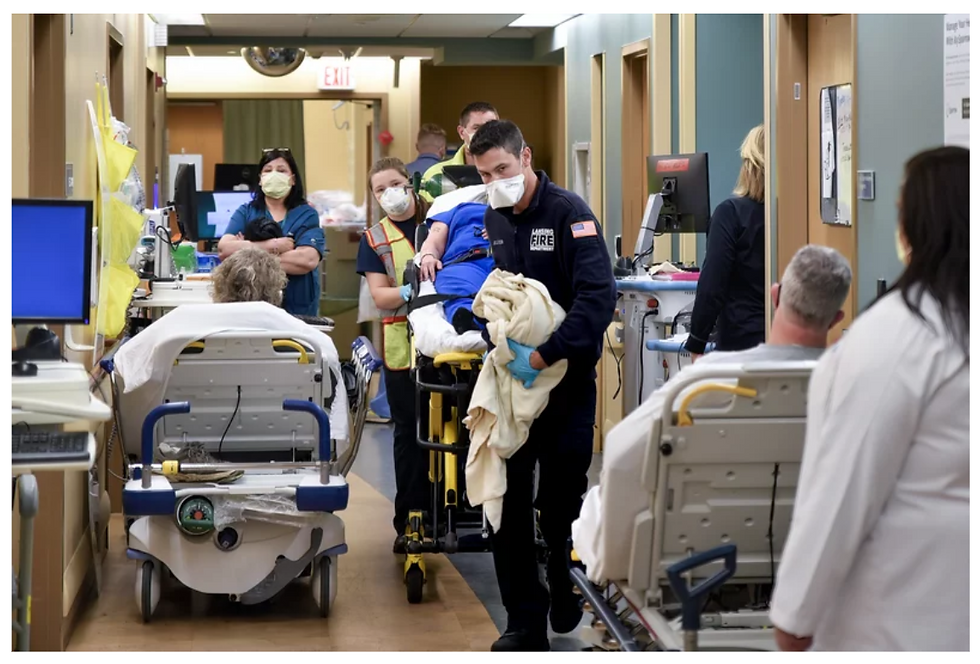Build vs Buy: What is the real question?
- katherinepiette
- Oct 25, 2021
- 3 min read
Updated: Jan 4, 2022
By Joseph Ebberwein, Co-Founder/CFO of Corstrata

At Corstrata, our conversations with potential customers often center around the “Build vs Buy” question. Many providers struggle with the decision whether to build all of their own wound elements for a Successful Wound Program, or outsource to best-in-class wound management solutions.
As our team continues to explore how we can best support an organization as they grapple with this important question, we have come to an important revelation. The “Build vs. Buy” question includes a major assumption that is often faulty, “I can recruit, hire, and retain a board-certified wound care nurse.”
Why is it a false notion? There are fifteen thousand board-certified wound nurses in the U.S. to serve the seven million chronic wound patients, a ratio of patients to specialty nurse of 467:1. Compounding this problem is that there is a ninety percent concentration of these specialists in the acute care setting with only ten percent practicing in the community and home-based models of care, even as care is moving home with new Advanced Care at Home models.
This severe access to certified wound and ostomy nurse problem is evident by just performing a search for WOC (Wound, Ostomy, Continence Nurses) or wound care nurse on Indeed. On any given day, you will find anywhere from ten to twenty thousand open positions in the U.S., significantly more than the current number of certified nurses.
When we read job descriptions associated with many of these job openings, it is obvious just how critical access is to wound and ostomy certified nurses. Here are just some of the responsibilities noted for these open positions needed to develop and maintain a Wound Care Program of Excellence:
The wound care nurse will work with the team to ensure that there is the delivery of reasonable, necessary, and clinically appropriate services related to wound care
Through the ongoing management of care by the WOCN, the organization will improve healthcare outcomes while reducing the costs associated with wound care patients.
The WOCN will review the patient’s wound to confirm etiology and staging for pressure injuries, develop an evidence-based plan of care to ensure the appropriate visit utilization as well as the use of advanced wound dressing
The WOCN will monitor the ongoing status of the wound and determine the need for continued skilled home health services by reviewing clinical documentation, wound photos, and measurements in accordance with practice guidelines.
The WOCN will maintain accurate communications with referring physicians, care team members, and patient/caregiver to ensure progress toward healing goals.
The WOCN will provide education to patients and caregivers on best practices to promote healing and excellent outcomes.
The WOCN will ensure that documentation of the patient’s wound reduces the risk of exposure to legal and compliance issues regarding the wound care delivered.
The list of critical duties and responsibilities touches every functional area of a provider’s organization - Clinical, Quality, Financial, Risk Management, Marketing, and Sales, etc.
Bottom Line? The “Build vs Buy” decision is entirely dependent on having access to one of these scarce, but critical resources!
Corstrata provides access to board-certified WOCNs at a fraction of the current cost of recruitment and retention, not to mention the ability to maintain productivity for these precious resources. We fit into your model with a cost-effective approach to PRN wound and ostomy consults tailored to your specific volume or we can provide you with additional services customized to your organization’s.
We will continue to explore...so watch for the next Blog on Build vs Buy!
For more information, Contact Us!




Comments